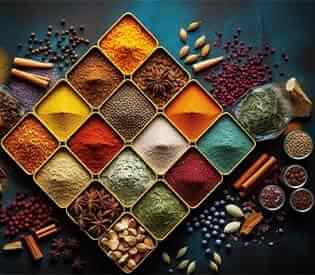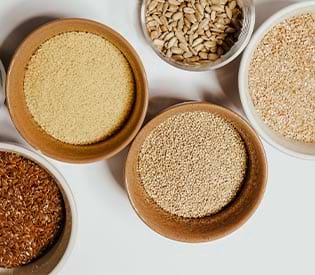Yellow Sandalwood Sticks
📦🚚 Fast & Free shipping on all orders
What are yellow sandalwood sticks?
Several prehistoric societies used sandalwood. It was known as "Bai tan xiang" in Chinese, "Byakudan" or "Senden" in Japanese, and "Candana" in Hinduism. "None but the Mali Mountains contain sandalwood," says an old Buddhist text. Sandalwood is one of the oldest incense ingredients, having been used for at least 4,000 years. Since it is one of the most relaxing scents, meditation likes to use it. It facilitates the Third Eye's opening, quiets the mind, and improves mental clarity. When used correctly, the scent may help individuals who are observing celibacy transform their sexual energy while also increasing dedication. Many religions, both ancient and modern, use sandalwood to make staffs and mala beads. If you've read through the many remarks on sandalwood, you are aware of the widespread belief that sandalwood—aside from Mysore sandalwood—is often regarded as "inferior." This claim is a little misleading. Sandalwood is a marketing term for many woods and oils, which are actually entirely different species.
The family Santalaceae includes the sandalwood tree, scientifically known as Santalum album. The woodlands of Karnataka, Tamil Nadu, Kerala, Andhra Pradesh, and the Indonesian Timor Islands are home to the sandalwood tree nearly entirely. The essential oil takes at least 15 to 20 years to fully mature in the heartwood and roots of the tree; complete maturation occurs after 60 to 80 years. The exterior sapwood covers the progressively developing black heartwood core. During the rainy season, when the roots are more abundant in the valuable essential oil, the sandalwood tree is uprooted rather than destroyed. Real sandalwood is grown on carefully managed plantations in Vietnam and New Caledonia. The Indian states of Tamil Nadu and Mysore, where the state government protects the sandalwood tree harvest, produce the highest-quality oil.
12 to 15 meters is a medium-sized tree's height. In 60 to 80 years, the tree achieves full maturity, at which point the heartwood—the middle of the narrow trunk—reaches its highest oil content. The oil is present in both the heartwood and the roots, but the sapwood and bark have no smell. The sandalwood tree is never chopped down; instead, it is uprooted in the rainy season, when its valuable essential oils are more abundant. The sandalwood tree thrives on its own and appears to be occurring in hitherto undiscovered areas. But all of humanity's efforts to boost species proliferation and multiplicity have resulted in dwindling plant populations. It appears to be really difficult to manipulate!
Many individuals believe that the psychoactive, emotional, spiritual, or therapeutic effects found in centuries-old wood powder or incense burning are not present in essential oils made from any sandalwood tree, including Mysore. In their old practice, Ayurvedic doctors either burned pieces of sandalwood or utilized powdered sandalwood. Sandalwood is utilized medicinally in the West although essential oils and attars were also employed in Indian medicine in the 1920s, thanks to French aromatherapists and the perfume business.
How do I use yellow sandalwood sticks?
You may burn the incense or include the powder in your rituals to incorporate yellow sandalwood into your spiritual practice. You can also wear or carry yellow sandalwood beads for protection and spiritual awareness. With yellow sandalwood, you can begin your path to both bodily and spiritual health right now.
Yellow sandalwood sticks have the following benefits:
Because yellow sandalwood has anti-inflammatory and anti-bacterial qualities, it is often utilized in Ayurvedic medicine. It may be used to strengthen the immune system, enhance digestion, and lessen the symptoms of skin disorders, including acne and eczema.
◉ Brain Boosting: Sandalwood has been used for millennia to support mental clarity and assist in meditation. More recent studies have indicated that sandalwood may also improve mood and concentration. Alpha-santalol is a chemical that is abundant in sandalwood essential oil. In a published study in the journal "Planta Medica," researchers found that alpha-santalol produced greater evaluations of attention and mood than the placebo. Additionally, the research discovered that individuals' blood pressure, pulse, and sweating all rose when exposed to sandalwood—all indicators of heightened alertness.
◉ Insomnia: Sandalwood essential oil contains "sesquiterpenes" that trigger the pineal gland in the brain to release melatonin. The primary hormone that controls sleep cycles, encourages sound sleep, and eliminates insomnia, restless nights, and other sleeping problems is this one. The oil's aroma has a strong sedative impact on the limbic system of the brain, which may help you get a good night's sleep.
◉ Anxiety/Stress: Sandalwood's calming and balancing scent aids in lowering stress and anxiety levels while fostering emotional equilibrium. Sandalwood essential oil may be used in aromatherapy to provide a calming, stress-relieving massage or bath oil.
◉ Skin Health: Natural anti-inflammatory and high in antioxidants, sandalwood protects against aging-related free-radical damage. Additionally, it helps with eczema, psoriasis, and acne. According to a study that was published in the "Journal of Clinical and Aesthetic Dermatology," sandalwood lessened the severity of several ailments. A combination of salicylic acid and santalol, the active ingredient in sandalwood, was shown to be effective in curing warts in 21% of the treatment group. Sandalwood's anti-inflammatory and antibacterial properties make it effective in treating bug bites, minor cuts, acne, and boils. Additionally, it has shown exceptional antiviral capabilities, particularly inhibiting the growth of the herpes simplex viruses 1 and 2. According to research that was published in "ScienceDirect," plaque formation was greatly decreased and viral replication was suppressed.
Where can I buy yellow sandalwood sticks?
Buy yellow sandalwood sticks from the health food store in the USA, Alive Herbals.
Yellow Sandalwood Sticks information (at a glance):
| Product Name | Yellow Sandalwood Sticks. |
| Scientific Name | Santalum Album. |
| Country of Origin | It is native to India. |
| Ingredient | Yellow Sandalwood Sticks. |
| Taste & Aroma | It has a soft, creamy, and woody aroma with a hint of spice. |
| Shelf Life & Storage | Shelf Life is about 06 - 24 months. Store it in an airtight container in a cool, dry place and prevent sunlight exposure. |
| Precautions | We requested you, Before consuming spices, herbs, teas or any kind of natural products you consult an expert qualified healthcare practitioner or herbalist. |
| Note | This product information has not been appraised by the Food and Drug Administration (FDA). This information is solely intended for educational purposes. |







